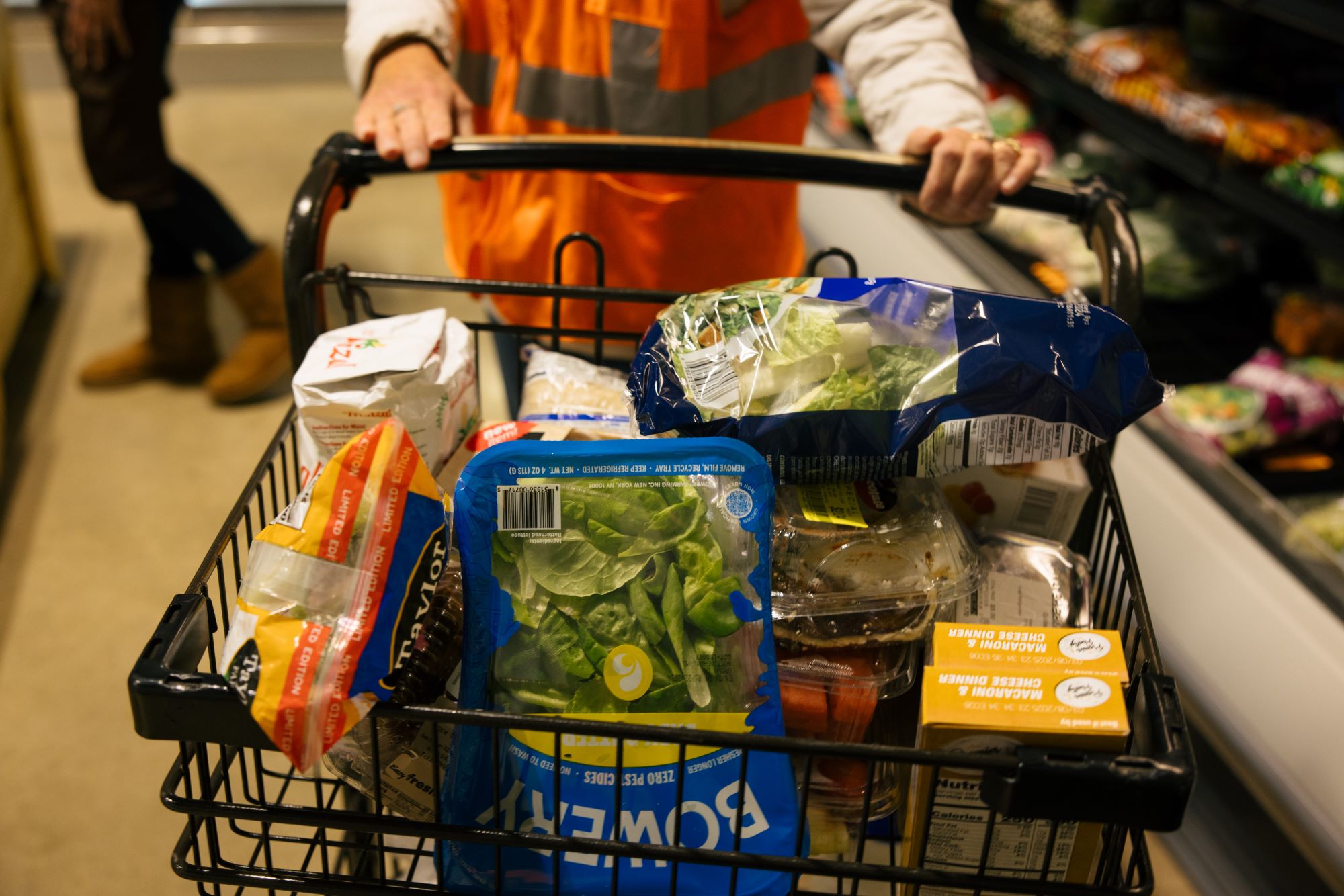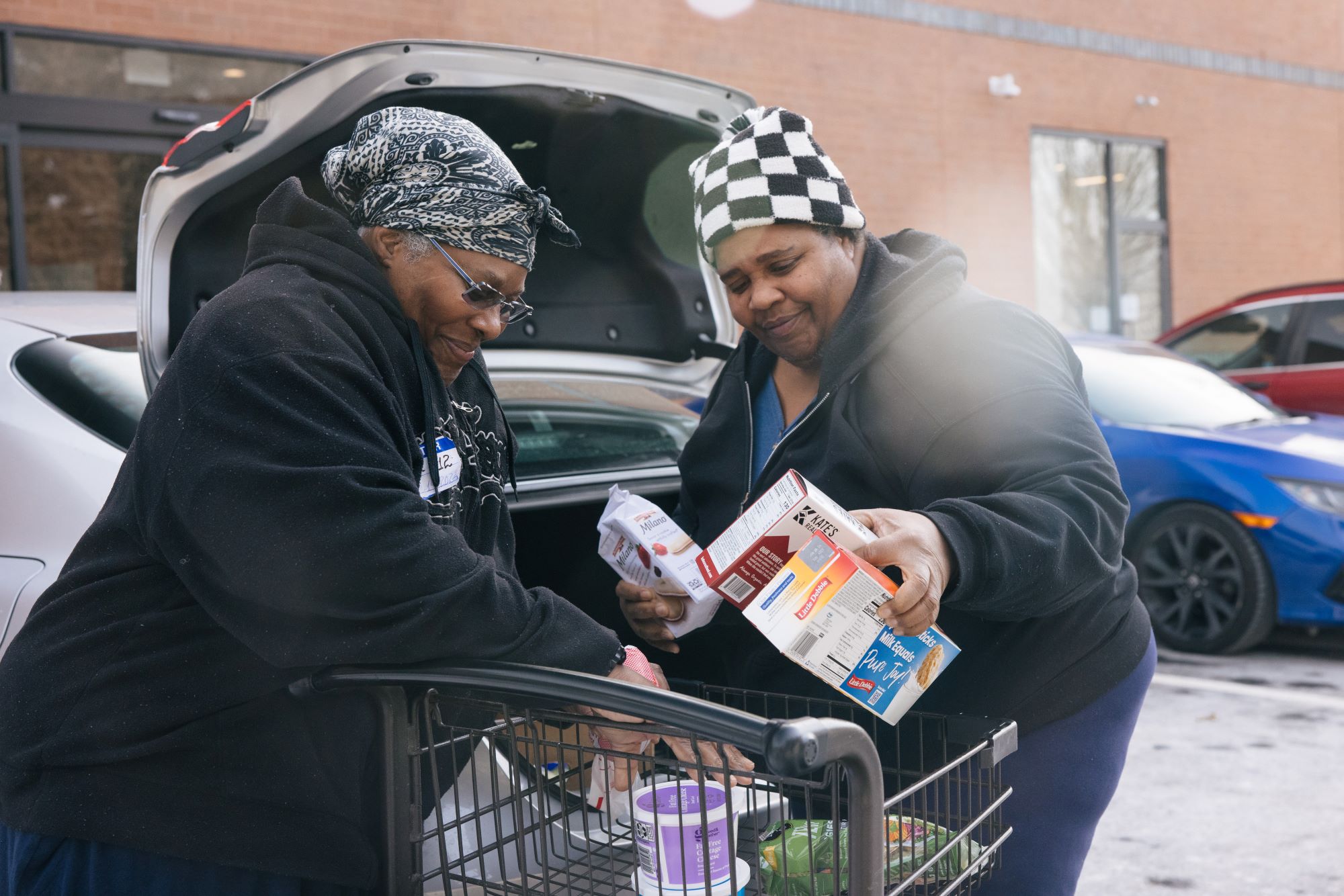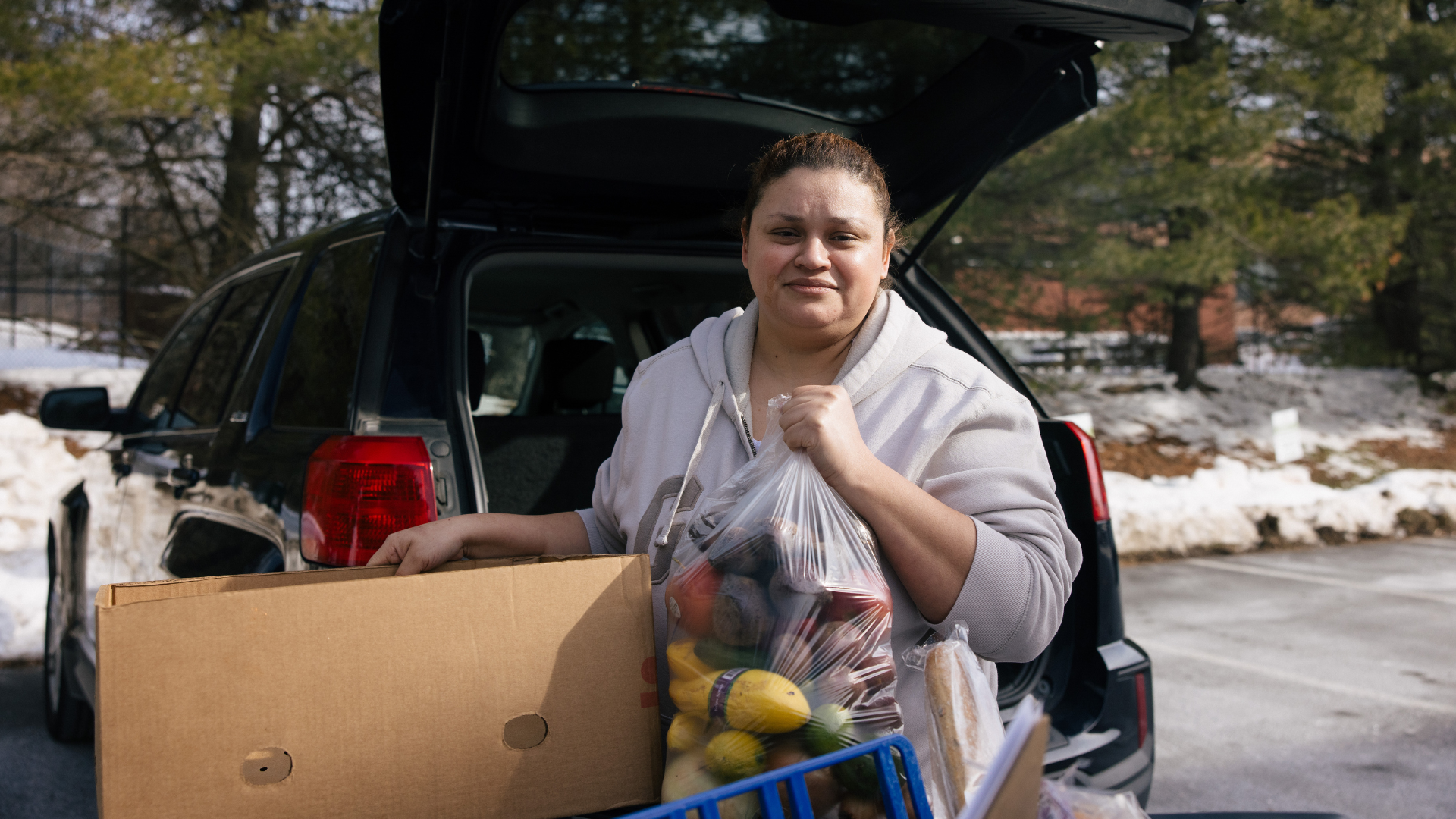In the heart of Loudoun County, Loudoun Hunger Relief (LHR) is transforming the traditional food pantry model. While offering nutritious options to families experiencing food insecurity, LHR weaves a tapestry of support into its daily operations.
It’s the result of a vision where everyone has access to healthy food, but also essential resources they need to thrive.
The secret to success? Partnerships.
“We are a conduit,” said President and CEO Jennifer Montgomery of Loudoun Hunger Relief. “A conduit between those who need help, and those who can give it.”


Jennifer Montgomery is president and CEO of Loudoun Hunger Relief, a Blue Ridge Area Food Bank partner pantry serving between 650-850 households a week in Loudoun County, Virginia.
Humble beginnings to big aspirations
Loudoun Hunger Relief has been helping people in Loudoun County since the early 1990s, when LHR began its journey as Loudoun Interfaith Relief, a collection of faith-based pantries helping those who were struggling with food insecurity. After becoming a standalone 501(c)(3), the budding nonprofit changed its name to Loudoun Hunger Relief and expanded its mission to better serve the needs of the community.
Through the years, leadership at LHR became more and more convinced that in order to help those who are struggling with hunger, they should offer access to additional resources to find financial stability. Last year, LHR realized that vision when it opened the doors to its community service center—housing not just LHR’s flagship food market, but several other nonprofits offering community services.
Generous community
“There are so many opportunities in every community to connect people with the resources they need,” Montgomery said. “It made sense for Loudoun Hunger Relief to move in that direction as well,” she reflected. “We live in a generous community, and we have lots of great resources that are available to us. So come get it,” Montgomery said about the newly opened community service center.
Besides Loudoun Hunger Relief, the center houses Crossroads Jobs, Loudoun Literacy and Loudoun Volunteer Caregivers.
According to Montgomery, not only does the service center have resources available to everyone who walks through the door looking for food, their connections extend beyond the building on Miller Drive in Leesburg.
“We can connect people with resources that could help them get rent assistance, or utility assistance, or get them signed up to receive SNAP benefits,” Montgomery said. “We are not caseworkers, but we can connect people with the right resources.”
Lots of produce
In the meantime, Montgomery and her colleagues stay true to their core mission of providing healthy food to those who need it.
“We are focused on offering fresh produce,” Montgomery said. “To put that in perspective, 10 years ago we were able to offer 30,000 pounds of fresh produce, last year we grew that offering to 800,000 pounds.”
The food market is available to guests by appointment, and when they come in to shop, they can fill their bags with eggs, milk, meat, and shelf-stable items, besides fresh produce.
A silent crisis
Hunger and need are very hidden in Loudoun County, Montgomery said.
“When we talk about Loudoun, we often talk about the highest median income in the country, or our data centers. And that’s great and important and all these things make our community lovely. But we also have a lot of people struggling to make ends meet. They don’t always want their neighbors to know. That’s why we try to create a sense of normalcy and provide dignity at Loudoun Hunger Relief.”
Because, Montgomery said, for all the things that set us apart, we have a few important things in common as well.
“We are all neighbors. We might drive different kinds of cars or live in different houses. At the end of the day, we all have to eat.”

For guests Sara and Amesha, this food pantry is everything. Loudoun Hunger Relief helped them when money was tight through the years—providing a constant source of support though COVID, family illnesses, accidents, and surgeries.
“There are people all the way under the ground. I mean, alive and under the ground. That’s what it feels like,” Sara said. “And you know, it’s comforting to know that we have no money–we have nothing–but we can come around to [the pantry] and get us a little bit of food. So I’m thankful.”

